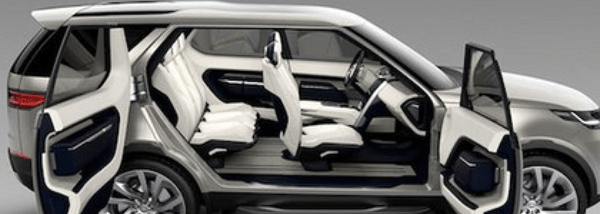It happens every day: you come to a dealership thinking you know what you want and need, and you leave with a new SUV. You end up with a big car loan and worst of all; you’re not sure if it’s even the best vehicle for you.
Buyer’s remorse is very real and can come with all sorts of purchases, especially large ones such as cars. [1] To avoid this, and to make sure you pick a top SUV that suits you, follow our simple four-step guide.

1) Look at Online Photos Closely
Photos are a large part of every car company’s marketing efforts. They make all the colors pop, and tempt you with great shots of the interior and exterior even before you see the car in person. Luckily, these pictures can also be a great help when you’re trying to narrow down your options.
Therefore, make sure to check out all the photos from an SUV that otherwise piques your interest. You can probably find photos from owners, besides official galleries, and close-up shots of particular details.
2) Check What’s Under the Hood and Compare SUV Specs
By design, SUVs come with a lot of horsepower capable of hailing large loads, whether passengers, gear, or trailers and small boats. Still, not every SUV can handle big jobs like these.
Keep this in mind when checking out engine and transmission specifications and options. If you’re only going to be driving on well-maintained city roads without having to haul heavy loads, you can choose an engine with less horsepower. This way, you will end up with a better fuel economy, but also bring down the total price of your new vehicle. [2]
3) Get Enough Clearance
Another important thing to consider is how much clearance you will need between the ground and your new SUV. Increased clearance can help you take on rougher roads and survive nasty weather conditions.
Take your local weather and climate into consideration. For example, do you get lots of snow during the winter or lots of rain and floods? Furthermore, think about where you will be driving. Do you need to go off-road and how often will you take trips into the mountains?
While SUVs are great for city driving, remember that SUV is short for Sport Utility Vehicle. On average, the top new SUV models will have a large enough clearance to be never let you down on most surfaces, but extremes should be planned for with your purchase.
4) Research Your Options Before Buying
Our last step to finding the best SUV for you is to take your time and do your research. First, you will need to find a vehicle that has the power, features, and looks that you want. After that, it’s time to compare prices before visiting a local dealership.
It’s best to go online and research instead of going to a dealership and getting pressured while having a limited number of options to pick from. And while you’re at it, check for various discounts and incentives, and what’s the lowest price people are paying in your area. You’ll be able to demand a better deal with the right information.
[1]https://en.wikipedia.org/wiki/Buyer%27s_remorse
[2]https://www.autotrader.com/car-shopping/buying-a-car-how-do-you-know-what-kind-of-engine-to-get-241374
